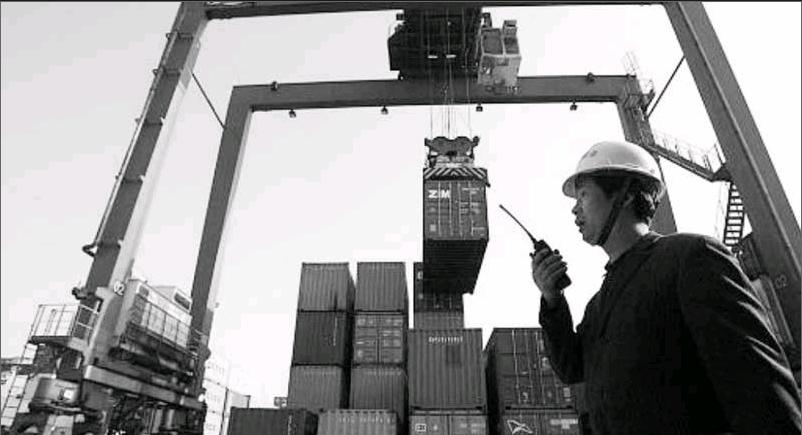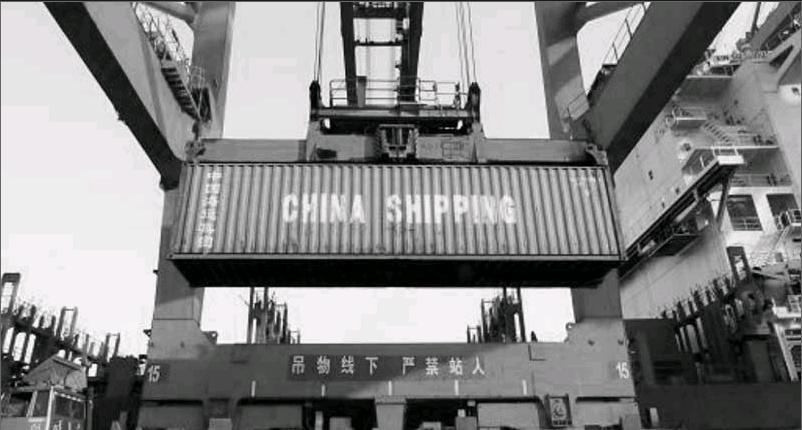China Faces Delicate Balance between Debt and Growth
2017-01-10


The current growth rate of Chinas debt is not sustainable for long thus special measure should be made to prevent the market from potential affection lead by the debt crisis, since nonperforming debt has placed greater strains on the financial sector, and possibly leaded to some bank recapitalization in China.
Chinas economic transition has caused a problem for the government—how to avert a sharp slowdown while keeping a lid on ballooning debt.
In a report Thursday, rating agency Standard and Poors highlighted the“tough choice between supporting growth and controlling debt sustainability” as China tries to find new ways to fund public investments.
“Although aggregate and provincial GDP growth stabilized in the first two quarters of 2016, we believe the fiscal conditions of Chinese local governments are under more pressure given the weakened economy,” S&P analysts wrote in a report.
The rising debt pile of local government financing vehicles (LGFV) raised questions on credit risks, said S&P.”As long as investments remain a growth impetus, it is very hard to shift away from the old public financing model to weaken the LGFVs role in public investment,” said S&P credit analyst, Xin Liu. “The growing pile of LGFV debt will add to the fiscal vulnerability of local governments, which already rely on these financing vehicles to execute public investment mandates,”she added.
S&Ps warning on local government debt comes amid concerns about overall debt levels in the country as the worlds second-largest economy begins to slow after years of boisterous growth. In another report released on Tuesday, S&P warned that the “unabated growth” of Chinas corporate debt could cost the countrys bank “dearly”.
It said the current growth rate of Chinas debt “is not sustainable for long”. S&P said if the growth in debt doesnt slow, the ratio of problem credit to total credit facing Chinas banks could triple to 17 percent by 2020. The banks may then need to raise fresh capital of up to 11.3 trillion Chinese yuan($1.7 trillion), which is equivalent to 16 percent of Chinas 2015 nominal GDP.
The Bank of International Settlements warned recently excessive credit growth in China will increase the countrys risk of a banking crisis in the next three years.
To cope with the debt load, China unveiled guidelines on Monday to reduce rising corporate debt.The government said it will take a multi-pronged approach to cutting company debt with measures including encouraging mergers and acquisitions, bankruptcies, debtto-equity swaps and debt securitization, according to guidelines issued by State Council.
Corporate China sits on $18 trillion in debt, equivalent to about 169 percent of gross domestic product (GDP), according to Reuters. China will combine deleveraging with overcapacity reductions, with the government giving preferential tax treatment to help firms cut debt levels, officials said on Monday, the news agency reported.
According to a recent Reuters analysis, profits at roughly a quarter of Chinese companies were too low in the first half of this year to cover their debt servicing obligations.
“We believe Chinas banks and financial system can withstand higher non-performers. However, in the downside scenario where the current growth rate continues unabated over the next five years, the likely rise in nonperform- ing debt could place greater strain on the financial sector, possibly leading to some bank recapitalization,” said Qiang Liao, a S&P credit analyst wrote in Tuesdays report. The amount of debt used to fuel Chinas economic growth has long been a worry to global investors.
Earlier this year, George Soros said that Chinas debt expansion “eerily resembles what happened during the financial crisis in the US in 2007-08, which was similarly fueled by credit growth.”
And the warnings are getting more insistent. The Bank for International Settlements in Basel, which is a global organisation of central banks, released data showing just how dangerous Chinas debt bubble is becoming. The BIS said that Chinas credit-to-GDP gap now stands at 30.1%, the highest for any country since data was collected in 1995. “While it is difficult to quantify‘excessive credit precisely, the creditto-GDP gap captures this notion in a simple way. Importantly from a policy perspective, large gaps have been found to be a reliable early warning indicator(EWI) of banking crises or severe distress,” BIS said.
The measure describes how fast credit has been growing in a country, and is an early warning signal for financial crises. It displays the difference between a countrys debt-to-gdp ratio and the long-term trend. The BIS said anything above 10% needs attention. On that basis, Canada is also entering into dangerous territory.
Despite the slowdown in crossborder credit in late 2015 and early 2016, a number of countries still showed signs of strongly above-average domestic credit growth, which could sow the seeds for potential financial strains.According to the BIS early warning indicators, which are intended to capture financial overheating and potential financial distress over mediumterm horizons, credit growth continues to be unusually high relative to GDP in several Asian economies as well as in Canada.

A new plan to cut down corporate debt rate?
China unveiled guidelines to re-duce rising corporate debt levels which some analysts fear could destabilize the worlds second-largest economy. The government will take a multi-pronged approach to cutting company debt, including encouraging mergers and acquisitions, bankruptcies, debt-to-equity swaps and debt securitisation, according to guidelines issued by State Council, or the cabinet.
Corporate China sits on $18 trillion in debt, equivalent to about 169 percent of gross domestic product (GDP). International institutions have warned Beijing to stop financing weak firms, especially inefficient state-owned enterprises, which tend to crowd out the private sector. They also say the government needs to allow more defaults to improve credit allocation and stop wasteful spending in the economy.
High debt levels have added to operating difficulties for some Chinese firms, increasing their debt risks and financial risks, the National Development and Reform Commission (NDRC) said in a document released during a news briefing in Beijing.
“Market-oriented debt-to-equity swaps will be one of the important measures to reduce corporate leverage,”NDRCs vice chairman Lian Weiliang said during the briefing.
But Lian warned the swaps are not a “free lunch” for troubled companies, adding that loss-making “zombie”firms are strictly forbidden from such exchanges, which will be used mainly to help high-quality firms that face temporary difficulties. The government also will not be responsible for losses occurred during the swap process in a bid to prevent “moral hazard,” he added. The government aims to stabilize and reduce corporate debt levels in the nearand medium-term, the state planner said.
Chinas bond markets have worked for years on the assumption that issuers were effectively guaranteed by the state. Since 2014, though, Beijing has been cautiously trying to change that perception by allowing some issuers to default. China will combine deleveraging with overcapacity reductions, and the government will also provide preferential tax treatment to help firms cut debt levels, officials said.
The central bank will create a favorable monetary policy environment for debt reduction, Fan Yifei, a vice governor of the Peoples Bank of China, told the briefing.Banks will be encouraged to transfer bad loans to asset management companies and push forward the securitisation of bad assets, according to the cabinet guidelines.
However, banks cannot be forced to conduct the swaps, Lian said. His comments were echoed by Dai Bohua, assistant minister at the Ministry of Finance, who said the government will prevent a shift of risks from nonfinancial firms to banks under the debtto-equity swaps.
Debt has emerged as one of Chinas biggest challenges, with the countrys total debt load rising to 250 percent of GDP. Excessive credit growth in China is signaling an increasing risk of a banking crisis in the next three years,the Bank of International Settlements(BIS) warned recently.
According to a recent Reuters analysis, profits at roughly a quarter of Chinese companies were too low in the first half of this year to cover their debt servicing obligations, as earnings languish and loan burdens increase.
China experimented with debt-toequity swaps in the late 1990s as part of sweeping reforms to the state sector that led to around 28 million layoffs over five years. But experts said the program made state-owned firms less willing to find ways to pay back debts.
An Elegant, Simple Cure for Chinas Debt Addiction
Officials in the National Development and Reform Commission, the body thats responsible for drawing up urbanization plans, just proposed some measures that could help end Chinas cycle of local government debt and cool its property market .
In a report titled “Land System Reform and a New Kind of Urbanization,” NDRC officials proposed that land sales go to the central government, instead of to local governments as they currently do, and for local governments to levy property taxes instead. These measures could help align local government objectives toward “the sustainable development of the community,” says Patrick Chovanec, chief strategist at Silvercrest Asset Management and expert on Chinas economy.
“Right now, local governments in China are dependent on land sales for a big chunk--some estimates put it at 40%--of their revenue,” Chovanec tells Quartz. “Local governments are essentially dependent on a continuing property boom.... Its in their interests to boost property speculation.”
Heres why that is. Local government officials are on the hook for posting big GDP growth numbers. They spend a lot more than the central government to achieve that--local governments are responsible for nearly 80% of total government spending though theyreceive 47% of revenues (pdf, p.7), as you can see in this chart from the World Bank. Thats left them unduly reliant on selling land parcels. This encour- ages local governments to do things like relocate local residents and seize their land, or sit on supply to drive up prices, which have soared in recent years.
And even land-grabbing and speculation-encouraging hasnt been enough to help fund the 2009-2011 stimulus, plunging local governments headlong into debt. The result? Angry people evicted from their homes or stuck in rent purgatory. And local governments piling on debt to fund wasteful vanity projects.
The NDRCs proposals would help in several ways. Directing sales of land parcels, to be sold at cost or a very slight premium, to the central government would help it create more affordable housing. Plus, a property tax would also discourage the buy-and-hold speculation among wealthy Chinese people, cooling prices.
Levying property taxes- at present, only Shanghai and Chongqing have a tax, and its nominal--would not only give local governments a regular income, it would also align their development incentives with the interests of their citizens, says Chovanec.
“What [local governments would] have to do is maintain or enhance property values,” he says. “So what this means is that youre not just focused on the short-term gain from more construction. Youre focused on the longterm gain of the community.”
The truth is that the central government has mulled property taxes for a long time, and nothing has happened. But whats new about NDRCs proposal is that it addresses the deep flaws in the system that have so far made the measure unfeasible. Unlike much ballyhooed yuan internationalization or privatization of state-owned enterprises, these proposals are both effective and doable. And theyd encourage economic development of a sort that Chinas never seen before--the sustainable kind.
杂志排行
中国经贸聚焦·英文版的其它文章
- China Eyes Yuan Outflows in Battle Against Sinking Currency
- Planned Technological Transformation of Agri cultural Sector Fails to Im press Farmers
- Digital Currency Overturns the World
- Latest Public Official Changes in China
- Exhibitions
- Li Xiaohong Former President of Wuhan University Appointed as Deputy Minister of education
